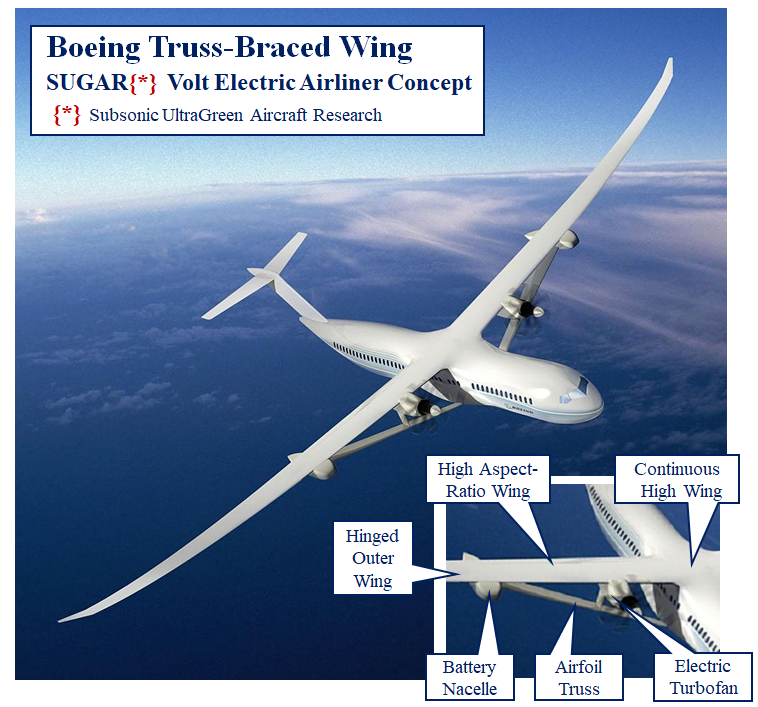|
Flying Off the Grid
Copyright ©2019 by Paul Niquette. All rights reserved. 
The key aerodynamic
feature of the SUGAR Volt
is its
extremely high aspect
ratio
of 27,
using a wingspan of 39 m (127 ft).
That's too long for
the SUGAR Volt to
be accommodated at standard airline gates, so the
outer wing is hinged for folding.
To achieve
high aerodynamic
efficiency, the
wing must
be
both slender and thin, so the design
applies a truss-braced
configuration.
The truss
has the form
of an airfoil,
which
provides lift to
augment that of the
wing. Let us
imagine a
SUGAR
Volt airliner
configured for
markets now
served by Boeing 737s, the
highest-selling
airliner in history,
with more than
10,000 in
service
as of this
writing.
The table
below makes
technical
comparisons
based on [a]
specifications
for the Classic
version
of
the Boeing
737, [b]
reference
literature
for the SUGAR
Volt
and [c]
an elementary
model...
You are invited to observe that 'equivalencies' are highlighted in yellow. Each invokes an explicit assumption for the model. One key assumption is indicated in green. It signifies a 'weight budget' for the SUGAR Volt's lithium-ion batteries based on the B737 Classic's fuel weight.
|
|||||||||||||||||||||||||||||||||||||||||||||||||||||||||||||||||||||||||||||||||
